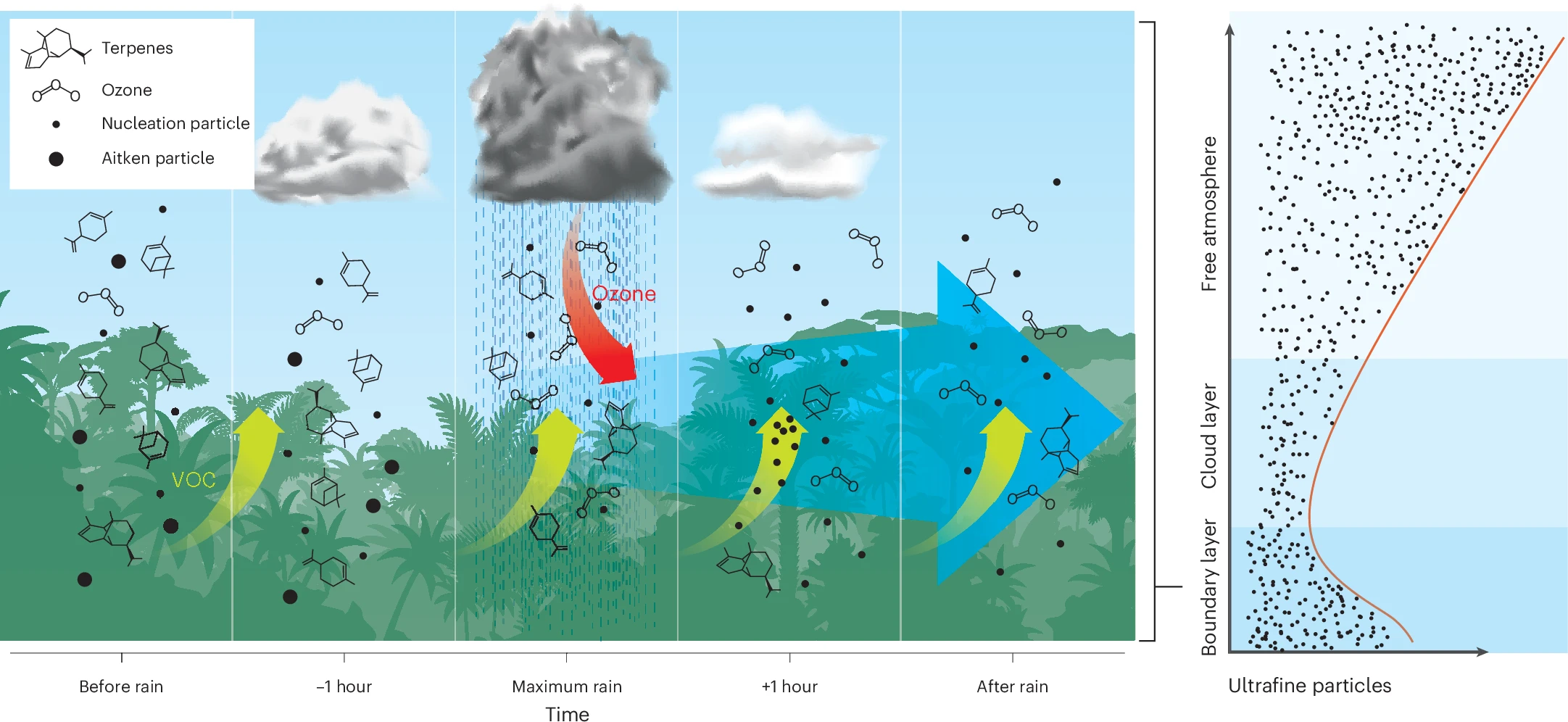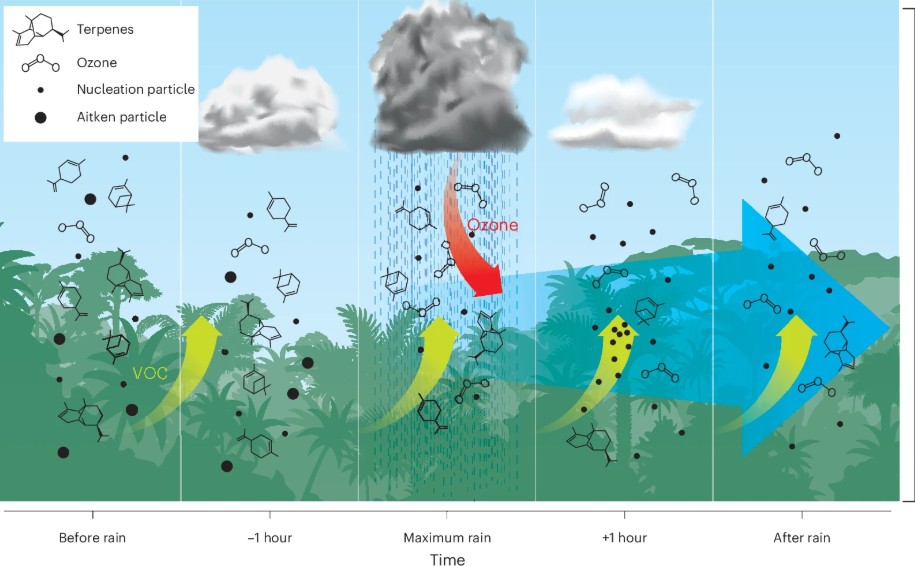Newly Identified Process Upends Previous Understanding…
A new study shows that in the Amazon wet season, the rainforest is not merely a recipient of atmospheric pollution washing downward in rainstorms. In today’s polluted atmosphere, it’s a source, returning nanoparticles in bursts above the forest canopy.

The evolution of particles and gases before, during, and after rain events in the Amazon forest. Nanoparticle “bursts” arise when ozone washed into the canopy during rainfall interacts with terpenes and isoprene emitted by the trees. The nanoparticles feed into processes that create cloud condensation nuclei and ultimately, clouds. Figure 6 from Machado et al., Nature Geosciences.
The process was identified by an international team of researchers using comprehensive chemistry and meteorological data from the Amazon Tall Tower Observatory, a technological wonder in Brazil that at 325 meters is taller than the Eiffel Tower and 5 times taller than the tallest tree in the forest.
Although it was expected that ultrafine particle concentrations would increase with altitude above the forest, the tower data showed the opposite. The highest concentrations were above the canopy and decreased with altitude.
Researchers showed that as rain washes ozone and other pollution down into the canopy, the ozone reacts with biogenic volatile organic compounds naturally emitted by the forest. Subsequent chemistry leads to the nanoparticles’ higher abundances at the canopy top.
Data before, during, and after rain events (figure below) clearly show the uptick in ozone and ultrafine particles during rain events, with simultaneous declines in the isoprene and terpene levels.

Left: The Amazon Tall Tower Observatory near Manaus, Brazil. Right: Chemistry data showing ozone and ultrafine particles (UFP) spiking during and after a rain event, and biogenic isoprene and monoterpene falling (Figure 5 from Machado et al., Nature Geosciences).
The nanoparticles eventually grow to become cloud condensation nuclei, the precursors to clouds. Cloud formation processes are crucial to weather and climate.
——————————–
Frequent rainfall-induced new particle formation within the canopy in the Amazon rainforest, L.A.T. Machado, G.R. Unfer, S. Brill et al., Nature Geosciences 17, 1225–1232 (2024).

